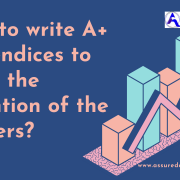Assignment Information
Using this template submit a portfolio of 12 questions from question bank (p. between 4000-6000 words. Each question should not exceed two pages. All your organisation analysis tools are to be included in the appendices.
Word count includes:
- Introduction
- All answered questions
- Conclusion
Word count does not include:
- Reference list
- Appendices
Portfolio requirements:
You are required to produce a portfolio of 12 answers from 15 questions. Sections 1, 5 & 6 are mandatory; sections 2, 3 and 4 have optional questions.
Assignment tasks (follow very carefully):
- The use of this template is mandatory
- Introduction to include a brief summary of the organisations you will analysis
- Answer the following number of questions from each section
Section 1 Exploring Organisations Mandatory Answer all 3 questions
Section 2 External Analysis Optional Answer 1 question only
Section 3 Internal Analysis Optional Answer 4 questions only
Section 4 Exploring Strategy Optional Answer 1 question only
Section 5 Exploring quality and organisational change Mandatory Answer both questions
Section 6 Exploring performance and organisational change Mandatory Answer the one question
- Conclude with a summary drawing together your research
- Compile a reference list of all your research sources (not included in word count)
- Include your organisations analysis tools in the appendices (not included in word count)
Portfolio Question Bank:
Section 1: Exploring Organisations (answer all three questions)
Question 1: What are Organisations (Answer all 7 sub-questions)
Providing examples discuss the following:
1. What are organisations?
2. What do organisations do?
3. What are they composed of?
4. How are organisations organised?
5. Are they all the same or are there differences?
6. If they are different in what way do they differ?
7. What are the reasons for the differences?
Question 2: Organisational Context
• Why is understanding the context within which an organisation operates important? (Remember you should be using the literature to develop and support your answers)
Question 3: Strategic decision making and strategic frameworks
- What benefit would strategic decision-makers gain from utilising a definitive framework and following a specified strategy development and deployment process?
- You are expected to provide an example(s) of a strategic leadership framework.
————————————————————————————————————————
Section 2: External Analysis (answer 1 question only)
Question 4: PESTLE Analysis (answer all tasks)
• Carry out a PESTLE analysis of a nationally operating retailing organisation of your choice.
• Discuss the results of your analysis and any conclusions you can make concerning the organisations mid to long-term future.
• What trends might be useful to monitor as a performance indicator for strategic actions the organisation might take?
• You are expected to use the PESTLE grids we used in the seminar and include in the appendix section to support your answer.
Question 5: Porter’s 5 Force Analysis (answer all tasks)
- After a review of literature provide a brief overview of Porter’s Five Force model.
- Carry out a Porter’s Five Force analysis of the nationally operating retail organisation you chose for your PESTLE analysis and record in the Appendix Section.
- Describe and discuss the results of your analysis including what it means to the organisation.
————————————————————————————————————————
Section 3: Internal Analysis (answer 4 questions only)
Question 6: McKinsey 7S Analysis
After critically evaluating the McKinsey 7S model describe how it could be used in an organisational change programme after a PESTLE and 5 Force Analysis had been completed.
Question 7: Product & Service Portfolio Analysis (answer both tasks) Using a real world example:
- When considering the Boston Matrix explain what causes products and services to be ‘cash users’, ‘cash neutral’ or ‘cash generators’.
- Explain why an organisation might decide to keep providing a product or service long after it has reached the decline and low return stage of the life cycle.
Question 8: Competitive Advantage, Porter’s Generic Strategies (answer all three tasks)
- Produce a table that records the features of the competitive positioning strategies of:
- Ryan Air, BMW, Lidl and Rolex.
- Where and why does each of these organisations fit in the Porter Generic Strategy Model? Describe how each organisation sustains their competitive advantage.
Question 9: Value chain, Porter’s value chain (answer all tasks)
- Select an organisation that you are familiar with.
- Produce a generic value chain model for the sector/industry of your organisation and provide a short description of each value added stage.
- Now produce a detailed Porter’s Value Chain of your chosen organisations clearly identifying key ‘primary and support’ activities.
- Make some suggestions of how to improve the cost effectiveness of some of the value chain ‘primary’ and ‘support’ activities.
Question 10: Stakeholder Analysis (answer both tasks)
Using the organisation you chose to answer question 9 (Value Chain)
- Using appropriate tools and techniques conduct a current and future stakeholder analysis for the chosen organisation. (Clearly identify the tools and techniques used to identify relevant stakeholders)
- Use the stakeholder analysis grids used in the seminar to record and discuss your findings
The current analysis should identify the main stakeholders today (Early 2017), whilst the future analysis should identify potential new and emerging stakeholders.
————————————————————————————————————————
Section 4: Exploring Strategy (answer 1 question only)
Question 11: Scenario Review
Using real world examples discuss:
- When analysing scenarios and using them as a strategic planning tool, why, is it beneficial for planners to rank scenarios and identify commonness in possible futures and potential pathways?
Question 12: Strategic Choice and Development
Using real world examples, discuss:
- What is strategic drift and what are the issues for managers when preventing strategic drift?
————————————————————————————————————————
Section 5: Exploring Quality and Organisational Change (answer both questions)
Question 13: Quality Performance and Organisational Change
Research on Quality:
- Research the academic literature to find an article or paper that describes how an organisation uses one (or more) of the quality concepts, tools or techniques.
- Write a summary of the article or paper and critically comment on it.
Question 14: Quality Gurus (answer both tasks)
Quality gurus:
- After conducting a review of literature provide a brief summary concerning the work of the quality gurus we discussed in the seminar.
- Then select one of the gurus, and provide a more detailed review of their work, paying particular attention to the relevance of their work on the quality of products and services today and the performance of the organisations that provide these products and services.
————————————————————————————————————————
Section 6: Exploring Performance and Organisational Change (answer all question tasks)
Question 15: Performance Management Systems and the Balanced Score Card
After conducting a review of the academic literature concerning Performance Management and the Balanced Score Card:
Answer the following questions and discuss the issues.
- What is performance management?
- What is the Balanced Scorecard?
- Why is Balance Scorecard different to traditional performance management systems?











